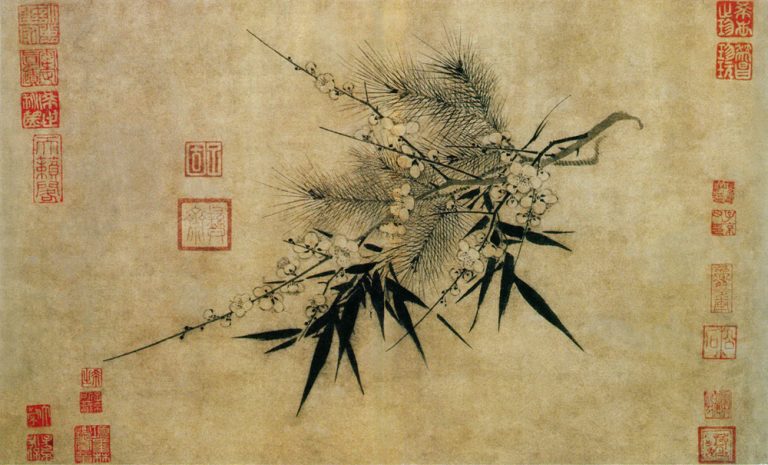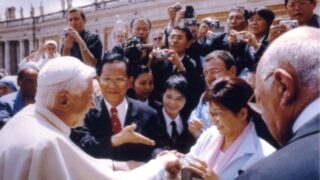Can what is happening today to Tai Ji Men be called “persecution”? Yes, according to the most recent definitions.
by Massimo Introvigne*
*A paper presented at the webinar “Tai Ji Men: Victims No More,” co-organized by CESNUR and Human Rights Without Frontiers on August 22, 2023, International Day Commemorating the Victims of Acts of Violence Based on Religion and Belief.


Is Tai Ji Men really a victim of religious persecution? Sometimes this question is asked even by those who support Tai Ji Men. They object that the movement is discriminated against and harassed but not “persecuted,” or perhaps was persecuted in the past but it is no longer persecuted today.
To answer this question correctly, we should examine the scholarly discussions about the definition of “religious persecution.” We can quickly dismiss the objection that Tai Ji Men is not victim of “religious persecution” because it does not define itself as a religion or a religious movement. In fact, “religious persecution” is a shorthand for the longer expression based on Article 18 of the United Nations International Covenant on Civil and Political Rights, and used in several international documents, including the resolution instituting August 22’s International Day: “persecution based on religion or belief.” While the definition of “religion” is a contentious matter among scholars, there is little doubt that Tai Ji Men as a spiritual movement is based on “beliefs.” Acts limiting the freedom of Tai Ji Men are thus acts against freedom of religion or belief (FoRB).
However, not all acts limiting freedom of religion or belief amount to persecution, although all are prohibited by Article 18 and other provisions of international law. In fact, there is no shared legal definition of persecution, while different definitions have been proposed by scholars.
In recent history, the first definition of “religious persecution” that gathered support among scholars was proposed by Brian J. Grim and Roger Finke in articles of the first decade of the 21st century, then in their book “The Price of Freedom Denied: Religious Persecution and Conflict in the Twenty-First Century,” published by Cambridge University Press in 2010. They defined religious persecution as “physical abuse or physical displacement due to one’s religious practices, profession, or affiliation.” If the abuse was not “physical,” Grim and Finke (who somewhat nuanced their position in later writings), there is religious discrimination, which is not something they took lightly, but for which they suggested not to use the word “persecution.”


If we adopt the Grim-Finke definition, Tai Ji Men was certainly victim of persecution in 1996 and 1997 when his Shifu (Grand Master), his wife, and two disciples were unjustly detained, since unjust detention for the two American scholars is part of “physical abuse.” That their detention was unjust was officially recognized by Taiwan’s Supreme Court in 2007, and they even received national compensation for it. Physical violence surfaced occasionally even later, such as when Ms. Huang, a Tai Ji Men volunteer, was arrested and mistreated in 2020. However, by adopting the Grim-Finke standard, there would not be today a systematic “religious persecution” of Tai Ji Men.
However, the definition by Grim and Finke was criticized in 2011 in a doctoral dissertation at University of Michigan by Australian scholar David Thomas Smith. It was re-elaborated in 2015 as the book “Religious Persecution and the Political Order in the United States,” whose publisher was the same Cambridge University Press that had published the earlier book by Grim and Finke.
Smith, whose theory is now followed by a good number of scholars, maintained that “religious persecution” should be defined differently in totalitarian and in democratic regimes. In totalitarian states, it takes mostly the form of physical violence, and the Grim-Finke definition applies. In democratic regimes, however, while occasionally including unjust detention, and even physical violence by private opponents that is more or less tolerated by the state, religious persecution is mostly non-physical. In democratic countries, Smith wrote, both physical violence and discrimination are part of “persecution”.
For Smith, “religious persecution” “refers to actions that are intended to deprive individuals of their political rights and force minorities to assimilate, leave, or live as second-class citizens. When these actions persistently happen over a period of time, and when they also include large numbers of perpetrators and victims, we may refer to them as being part of a ‘campaign of persecution.’” Smith’s book examined a democratic country surely committed to freedom of religion, the United States, and discussed the cases of the Jehovah’s Witnesses and the Latter-day Saints (Mormons). While in their early days they were unjustly detained or beaten and even killed by mobs that could count on the inaction or complicity of local authorities, for a much longer period they were slandered by the media, discriminated by the authorities, and regarded by many as second-class citizens.
By adopting the more state-of-the-art Smith definition, the “religious persecution” of Tai Ji Men continued even after those detained were released in 1997, through media slander and treatment as second-class citizens when they rightly asked for tax justice and tried to prevent the unjust confiscation of their sacred land.
There is more in Smith’s book that may be of interest for the Tai Ji Men case. He asks the question why in democratic countries some groups whose beliefs and practices differ from those of the majority are persecuted, while others escape persecution. Smith’s answer is that democratic states persecute groups they perceive as threats to the political order, and cease the persecution when the persecution itself becomes a biggest threat to the political order than the persecuted group. Democratic states rarely start a persecution spontaneously. Certain “political actors,” Smith wrote, “convince others that the persecution of one group can be reconciled with an overall system of tolerance of minorities—that the rights of some can be undermined without undermining the rights of all.”


In several countries, these are the religious counter-cult and secular anti-cult movements, but other more strictly political actors may also be at work, as it happened in the case of Tai Ji Men, which was originally accused of not supporting the ruling political party.
Smith’s theory of religious persecution shows us that a general “system of tolerance of minorities” is perfectly compatible with the persecution of some groups, and the two things in fact go together in many modern democratic states, which answers the objection that Tai Ji Men cannot be persecuted because Taiwan in general protects religious liberty. It also shows that democratic states, unlike their totalitarian counterparts that are often irrational, cease the persecutions when they understand that the political cost of persecution has become higher than the cost of tolerating a group they do not like.
This indicates one way of solving the Tai Ji Men case, and the one we are actively pursuing in this webinar. By multiplying initiatives where we present the Tai Ji Men case internationally, we make the political cost of maintaining the unjust confiscation of its land politically higher for the Taiwanese government. Sooner or later, the government should understand that this cost in terms of international reputation is disproportionate with respect to any benefit it may theoretically derive from the confiscated land and from saving the face of the bureaucrats involved in the fiasco. We can only hope that this understanding will come soon.









